'I'm going to be special': Sophia Smith is the next face of the USWNT. And she knows it.
PORTLAND, ORE. — When 14-year-old Sophia Smith told her family she was giving up basketball to concentrate fully on soccer, her dad, who played college hoops at Wyoming, took the news hard.
“Man, Soph, you could really be something in basketball,” Kenny Smith told his youngest daughter.
Sophia’s matter-of-fact response: “I’m going to be special in soccer.”
Talk about prescient.
Now 22, Smith is set to make her World Cup debut this summer with the U.S. women’s national team and show international audiences what a growing domestic fan base has known for a while: She’s about to take over.
The forward’s unique blend of smarts, speed, creativity, vision and technical skills gives her a versatility rare in the game. She attacks defenses from all over and knows her strengths, which allows her to play in an efficient manner; there’s no need for fancy footwork when you’re just faster and stronger than everyone else (though her footwork can be highlight worthy, too).
What’s more, she will star this summer for the best team in the world, a roster so stacked with superstars that Smith will not need to fill any holes or take on extra work when the USWNT opens play July 21 in New Zealand. She can just be herself – which tends to leave an impression.

“Her ability to turn and go 1-on-1 is next level,” said USWNT teammate Naomi Girma, who plays for the NWSL’s San Diego Wave and was Smith’s teammate at Stanford. “To a defender, she’s annoying.”
But her impact and inspiration will be measured by more than goals scored. Smith, who grew up in predominantly white Fort Collins, Colorado, understands the power and responsibility that comes with being a woman of color in a sport that’s long lacked racial diversity. It’s a responsibility she cherishes.
“Visibility matters,” Smith told USA TODAY Sports. “I feel lucky to be someone that a kid could look at and think, ‘Hey, that girl looks like me, I’m not the odd one out.’ ”
Her mom, Mollie, recalled, “When Soph was younger I remember her saying, ‘There’s Abby Wambach! There’s Christine Sinclair!’ and then yanking my arm down the stadium steps to go try to get a picture with them.
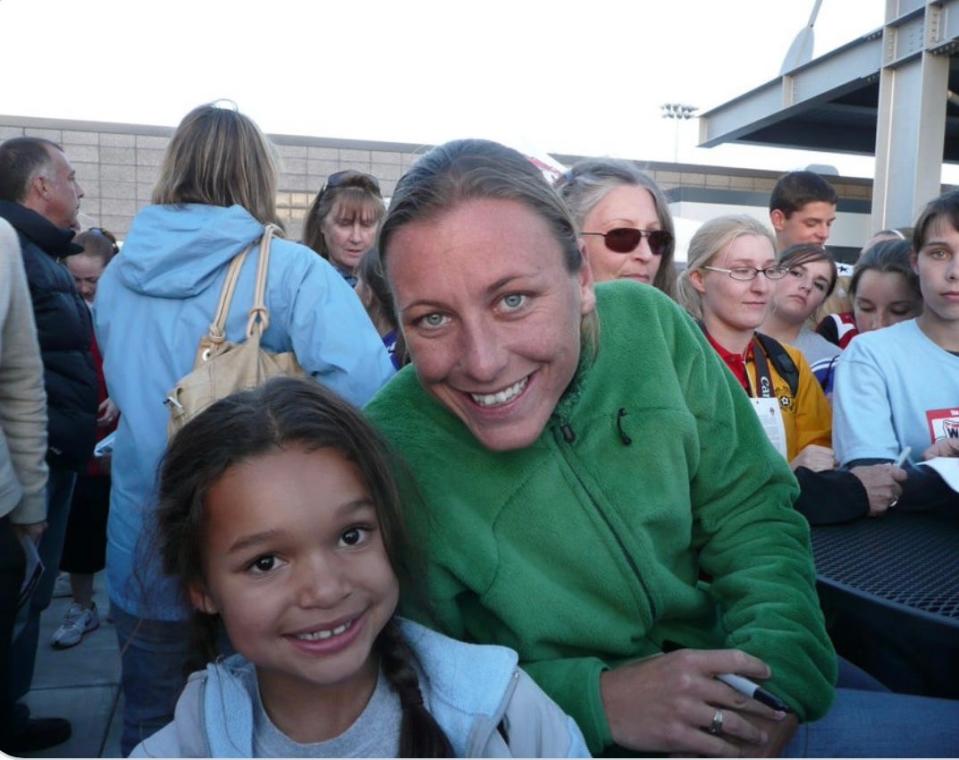
"When those women would take a picture with her or sign something for her or just say hi, it meant so much to Soph. She would talk about it forever.
“To think about Soph being that person for someone else now, well, that’s the coolest thing ever.”
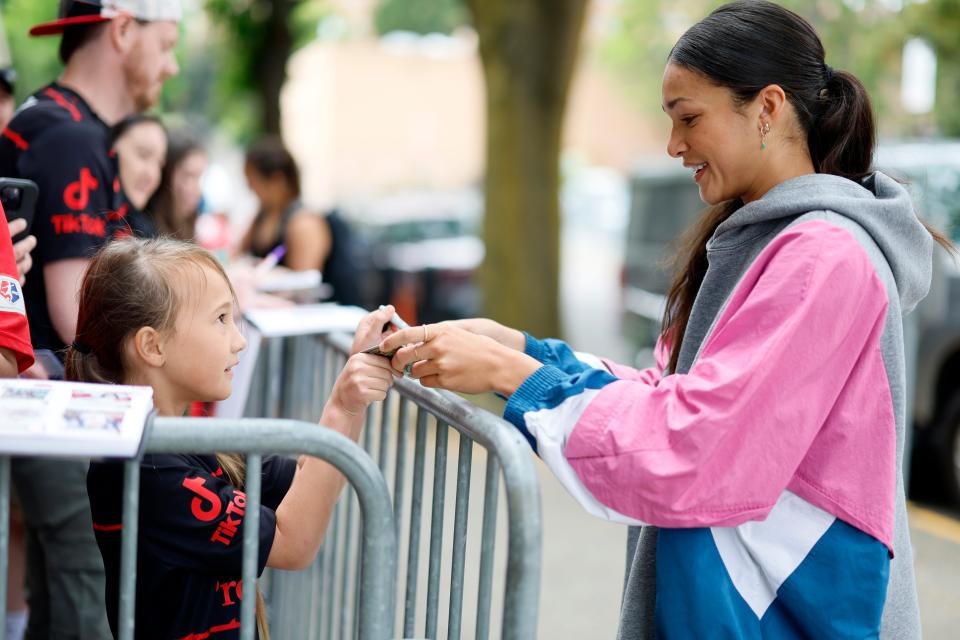
Embracing differences
Sophia Smith was different, and she hated it.
As one of the only girls of color in a largely white city and a white sport, Smith stood out. At night she’d cry if her mom didn’t have time to straighten her corkscrew curls before school. On the field and basketball floor, she resented coaches who lauded her only for her athleticism, a stereotype Black athletes often deal with.
Kenny, who played basketball at Wyoming from 1989 to 1991, decided to turn the label on its head. His girls were different? He’d make that a good thing. Instead of being singled out for their skin color or hair, he’d make them different because of their work ethic and technical skill.
He infused them with confidence, talking constantly about how if you want to be the best, you have to learn how to be a little selfish. In a world where kids fear being “the only,” Kenny encouraged his three daughters to stand out. He understood that young girls in particular are desperate to fit in. But it was OK, he said, to be different, to be special.
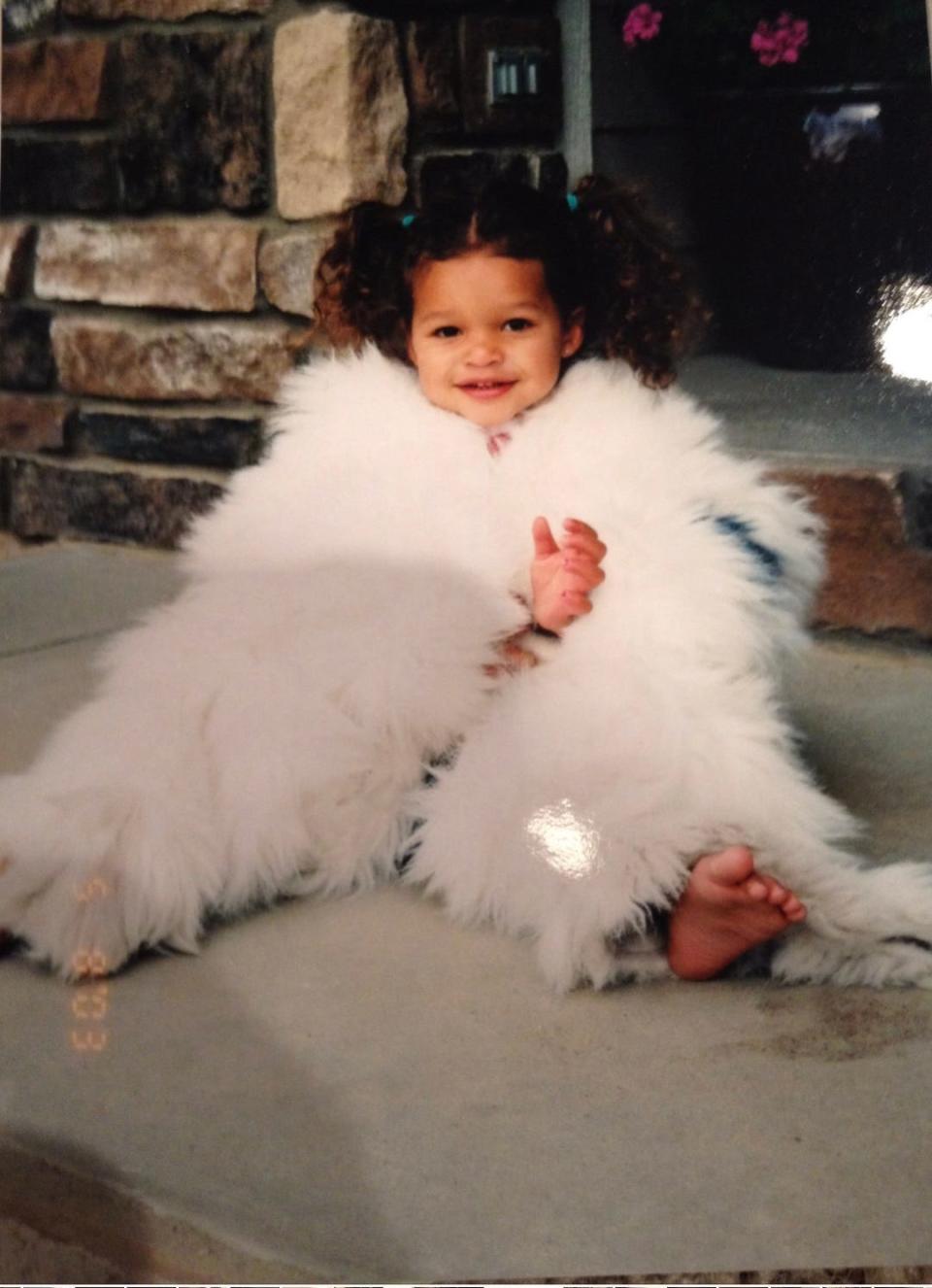
They had plenty of non-sports interests, too, from playing with their many pets – their collection included a sugar glider, tortoise, bunny, fish, two parakeets, two Guinea pigs, and a dog – to modeling for the local vacation Bible school pamphlets. Sophia, the youngest by four years, watched and followed her sisters everywhere.
That was especially true when it came to sports.
The Smith girls all played and loved basketball (middle daughter Savannah, who graduated from Northern Colorado in 2009, is the program’s all-time leading scorer), and Kenny knew how to drill them in it. They were junkies in every sense of the word: Years before Sophia chased down soccer greats Wambach and Sinclair asking for autographs and pictures, she, Savannah and oldest sister Gabrielle spent hours watching a pint-sized point guard tear it up at Colorado State, the local college. And yes, they took lots of pictures with Becky Hammon, too.
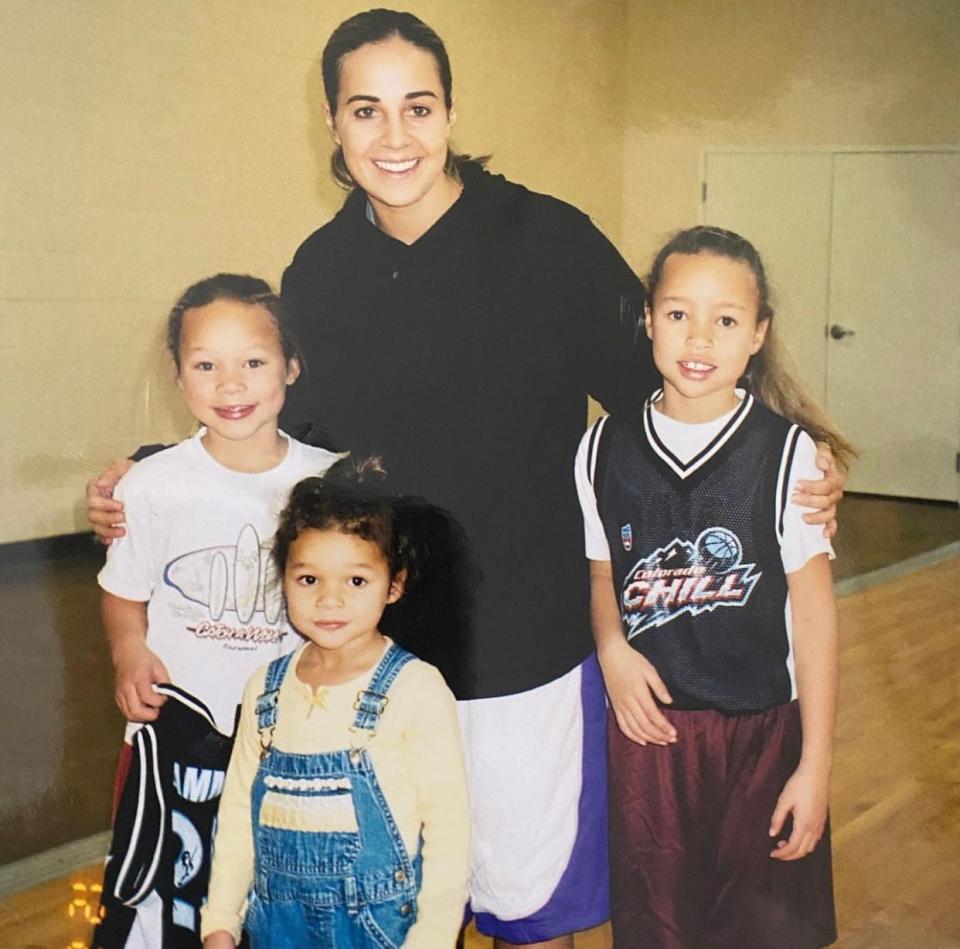
Kenny preached discipline and attention to detail, and Sophia drank it in. Though she loved hoops and at 16 said her craziest ambition was to be an Olympic gymnast, soccer quickly became her priority. She begged her parents to kick around with her, shag balls while she took shots on goal or set up cones in the gym to work on speed and agility. She craved improvement. She understood great athletes made sacrifices, like getting workouts in instead of going to sleepovers, that discipline ruled every corner of their lives.
“She cares about being good,” Kenny said, “and she’s not afraid to say it out loud.”
The Marta flair
By the time she started at Stanford in the fall of 2018, Smith was one of the top youth soccer players in America. Though she idolized Wambach, Smith wanted to emulate Marta, the Brazilian forward considered by many to be the greatest women’s player of all time.
“She was the player I tried to replicate my game after,” Smith said. “I don’t think there’s anyone like her. I just like her flair. It’s like watching a show. When she gets the ball, you’re always kind of wondering, what’s she going to do this time? I want to be like that.”
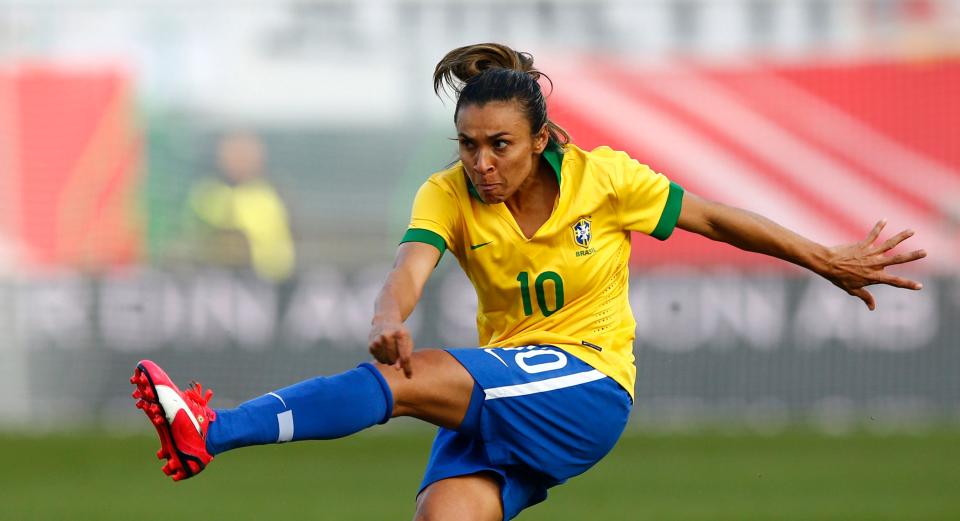
At Stanford, Smith met Michael Wilson, a receiver for the football team. On one of their first days on campus, they locked eyes across the ice bath and felt an instant connection. They’ve been together ever since.
Wilson, a third-round pick by Arizona in April’s NFL draft, has had a front-row seat to Smith’s rise but admits even he can become desensitized to her brilliance.
“Going to Stanford, everyone is doing something amazing,” he said. “Sometimes you become numb to someone being exceptional. But this summer, it’s going to be a different scale. It’s going to be a life-changing moment for her.”
That’s no accident.
“You don’t just wake up one day and get this good,” Wilson said. “It takes a lifetime of clinical dedication. What I hope people understand about her is that even though she’s naturally gifted, she works at it exceptionally hard. She is never OK with being second. That’s the separator, and that’s why she’s going to be a staple for American soccer.”
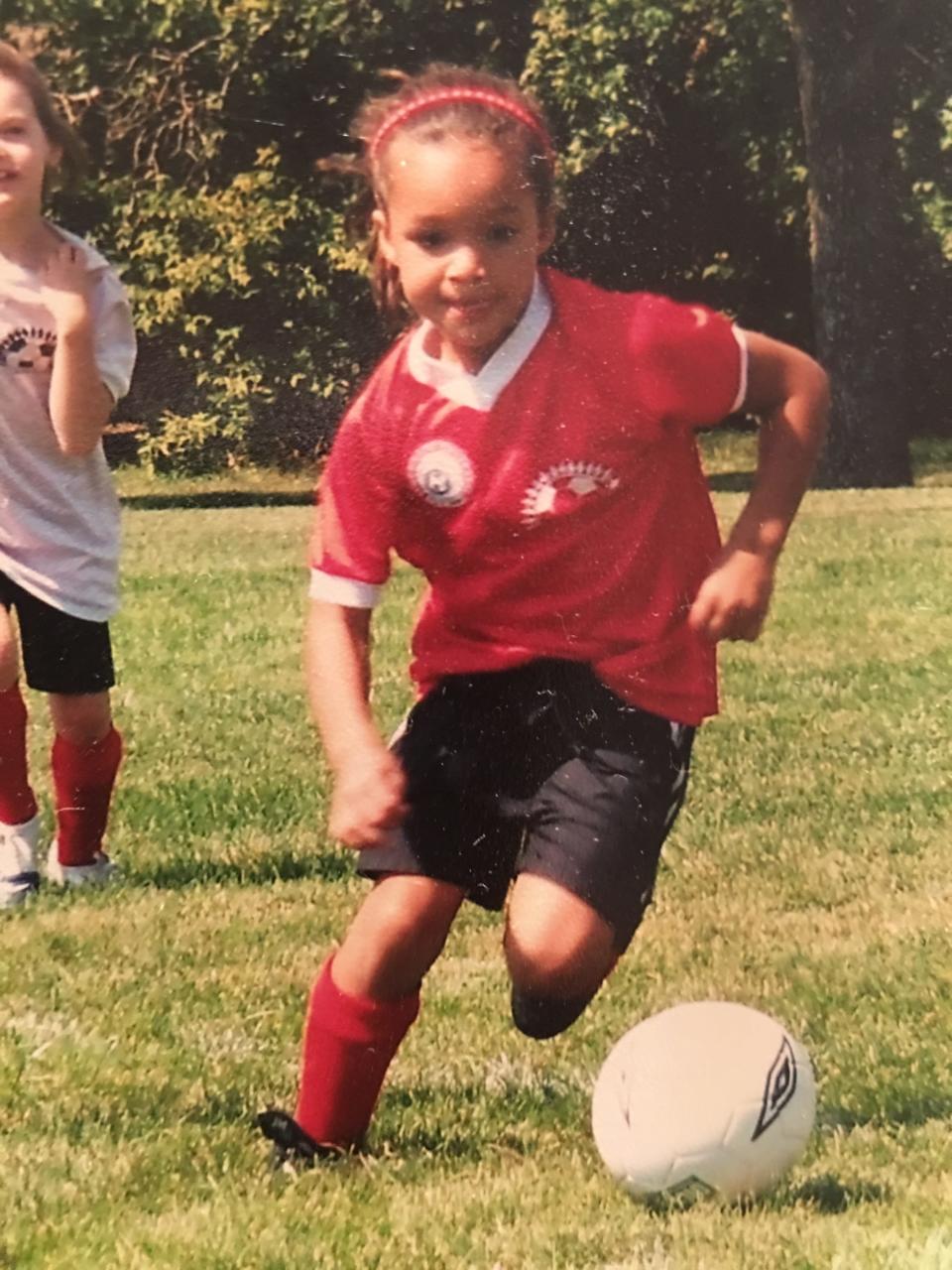
The natural athleticism doesn’t hurt either.
“When we have kids, I hope they get her athletic genes,” Wilson laughed.
While many U.S. Soccer players consider the 1999 World Cup a seminal moment for women’s soccer and women’s sports overall, Smith – who wasn’t born until the following summer, she playfully points out – looks to the 2019 World Cup in France, which took place just before her sophomore season.
“I was at a point in my life where I knew soccer was what I wanted to do and I could fully understand the importance of winning something that big,” she said. “Seeing the women’s national team do that made me think, ‘Wow, I want that, too.’ ”
Smith shined on The Farm that fall, leading Stanford to the 2019 NCAA title while tallying 17 goals and nine assists, the most goals scored in a single season in nearly a decade at Stanford. Along the way, Kenny, once a reluctant soccer dad, became not just her biggest fan but a futbol savant.
“My dad knows more about the Premier League than I do,” she said, laughing. “Every time someone scores a crazy goal he sends me the video and says, ‘You need to add this to your game.’ He wants to break down everything like, ‘Here’s what you should have done on that corner kick.’ It’s fun how much he’s bought into it.”
After just two college seasons, Smith decided to turn pro. She went No. 1 overall in the 2020 NWSL draft to the Portland Thorns, the first teenager drafted in league history.
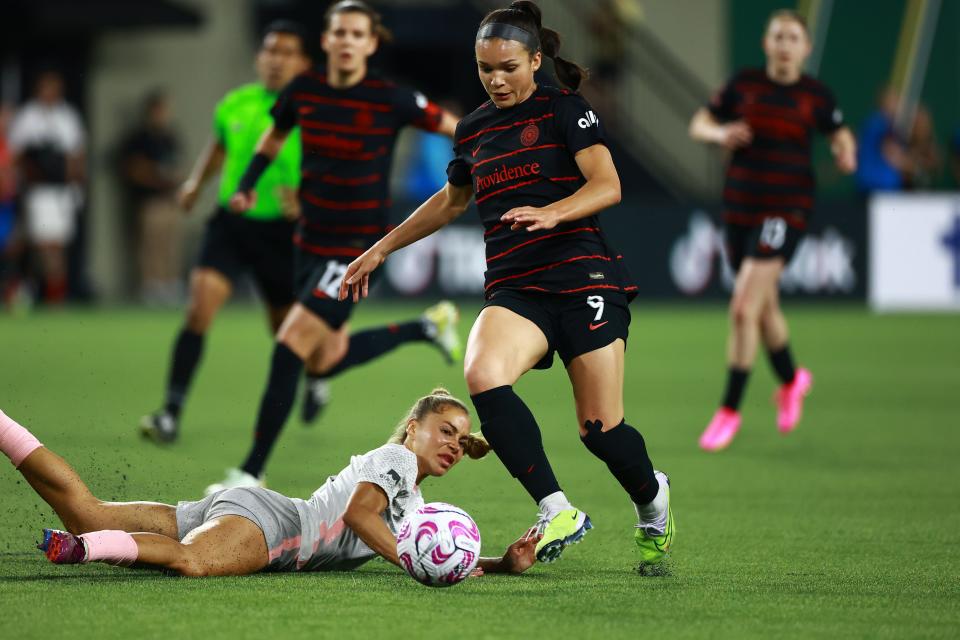
An instant fan favorite, Smith fit in easily with the laid-back city, spending her free time watching reality TV and reading romcoms. While she wishes women’s sports got more coverage and attention, she sometimes enjoys the anonymity: When she first moved to Portland, desperate for some animal time, she signed up to work for Rover, the dog-walking service. Suffice it to say that’s not something Giannis Antetokounmpo did when he arrived in Milwaukee as an 18-year-old draft pick.
Once again, she was different. But this time, she reveled in it.
Is Sophia Smith the game’s top player?
Though she played only four matches her rookie year due to injury and a COVID-shortened season, Smith blossomed in 2021 in part because of heartache. One of the last cuts to the USWNT roster before the Olympics, Smith returned to Portland and, with numerous players competing in Tokyo, had to become the leader of a team fighting for a playoff spot.
To Smith, the single most important piece of her game has nothing to do with her skill or athleticism but the fact that “I find a way to win.”

She knows that claim carries pressure, especially in a tournament where the USWNT will rely on her even more without forward Mallory Swanson, who leads the team with seven goals this year and tore her left patella tendon in April.
“I’m the person who’s supposed to be scoring goals, I’m the person who’s supposed to be assisting and I take that very seriously,” Smith said. “So I am disappointed if I go a game without a score or assists – and it’s not that I’m being selfish, it’s not about my ego. It’s just that that’s my job.”
In 2022, she exploded on the world scene, winning U.S. Soccer Athlete of the Year after scoring 11 times in 17 appearances, the youngest player since 1993 to lead the USWNT in goals. She proved quickly the U.S. would be in safe hands with her, a leader of the new generation taking over for a team that’s won back-to-back World Cups.
In Portland she took home the NWSL MVP award, finishing with 15 goals (tied for best in the league) and three assists, leading the Thorns to the NWSL championship.
She understands that this summer she has an opportunity to definitively answer what many are wondering: is Sophia Smith the game’s top player?
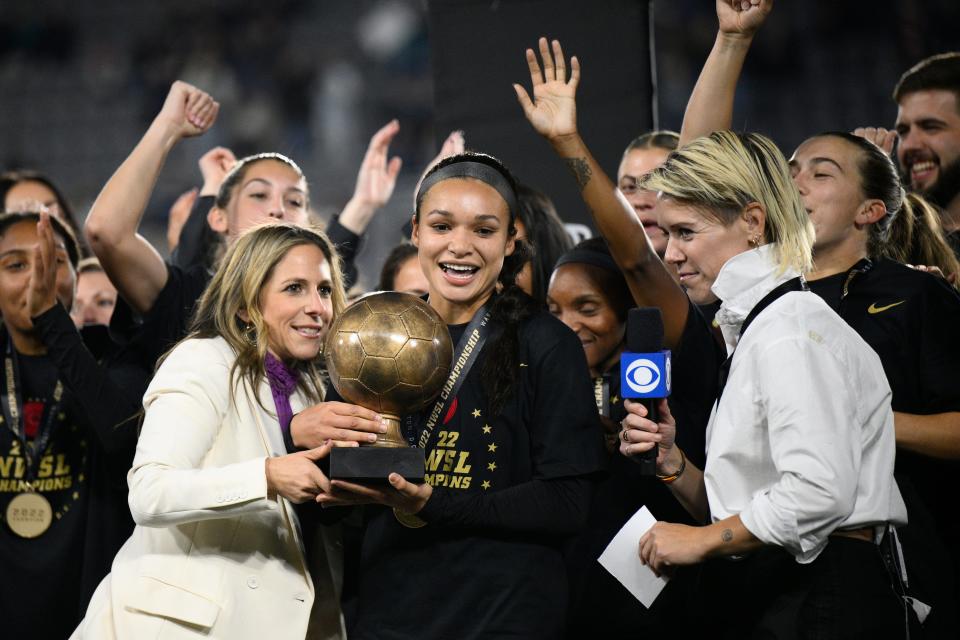
“That’s a big question,” she acknowledged. “I do feel like I’m at that point ... but I have to prove myself on the big stage, in a big tournament like the World Cup. And not just one time, but I have to continue to do that every time I’m out there. I don’t think there’s an end point to being the best in the world.”
Smith’s profile is growing, inside and outside of soccer, critical to a sport that’s badly needed more color on the national stage for decades. Crystal Dunn, her teammate in Portland and on the USWNT, told USA TODAY Sports that as one of the only Black women in U.S. Soccer, “I struggled feeling like I was kinda by myself for a handful of years.”
Smith, who along with Girma, Trinity Rodman and Alyssa Thompson represent a new wave of cultural and racial diversity on the USWNT, will change that.
“What I hope people understand about her is that she cares about everybody,” Kenny said, his voice catching. “She loves what she’s doing, but it’s more than that – she understands she’s not doing it for herself, but for other kids who look like her.”
Ultimately, that’s what Smith wants. A World Cup title (or two, or three) and a haul of gold medals from the Olympics, sure. But beyond wins and trophies, a sport where every little girl who looks like her feels welcome, wanted and celebrated. Where they’re not scared of being different.
This article originally appeared on USA TODAY: Meet Sophia Smith, the latest star on USWNT roster you need to know
